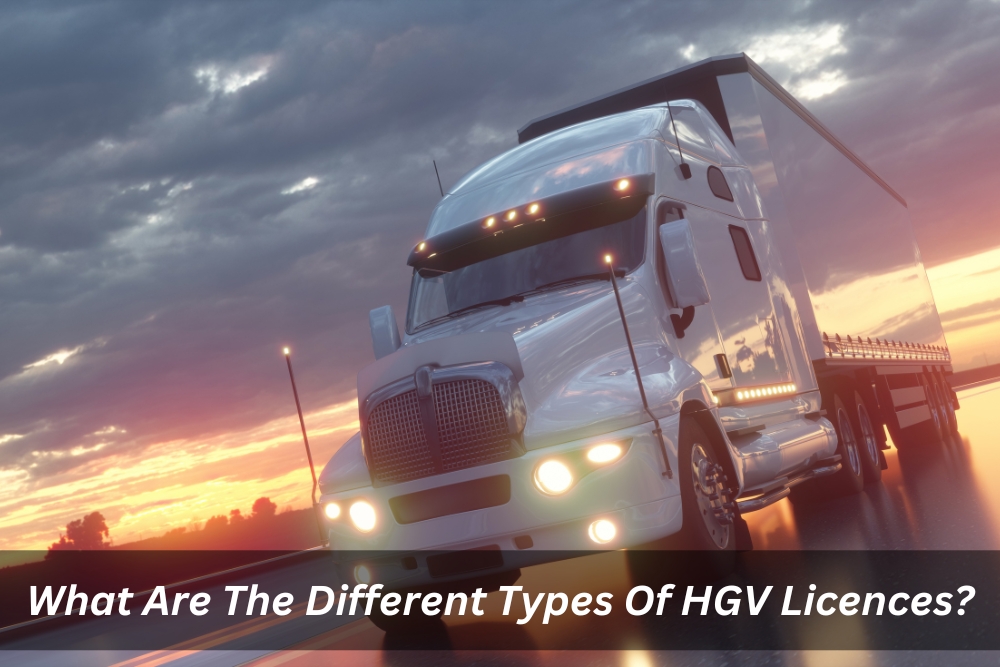If you aspire to become a truck driver, you may have come across the term ‘truck driver’s licence.’ However, the world of Heavy Goods Vehicles (HGVs) encompasses a vast range of vehicles. Each with its unique specifications and requirements. To embark on your journey as a professional driver and successfully navigate through this realm, it’s crucial to comprehend the different types of HGV licences available. These licences range from heavy combination truck licences to light rigid vehicle licences, and from heavy vehicle licence classes to prime movers. With each serving a distinct purpose in the transportation industry.
In this comprehensive guide, we will delve into the various categories of HGV licences. Including their minimum weight requirements, such as 3.5 tonnes and 7.5 tonnes, and the highly sought-after HC licence and category C licences necessary for specific vehicles. So, if you are eager to obtain the licence to drive heavy goods vehicles and embark on an exciting career on the road, let us explore the possibilities that await you in the world of HGV licences!
What are the other kinds of licences that can be obtained for HGVs?
Australia offers multiple licences for Heavy Goods Vehicles (HGVs) other than the standard Heavy Combination (HC) licence, which specifically cater to the needs of different types of heavy vehicles and their usage.
- One such licence is the Multi Combination (MC) licence, which is required for drivers who operate road trains, B-doubles, and other heavy vehicles that have more than two articulated units. This licence requires extensive training and testing, and only experienced drivers are eligible to apply.
- Another licence is the Heavy Rigid (HR) licence, which is required for driving trucks that have a GVM (Gross Vehicle Mass) of over 8,000 kg and have three or more axles. Drivers who transport heavy items like furniture and construction materials will find this licence ideal for operating their heavy-duty trucks.
- The Medium Rigid (MR) licence is required for driving vehicles that have a GVM of between 4,500 kg and 8,000 kg and have two axles. This licence is ideal for drivers who operate delivery trucks, buses, and other medium-sized commercial vehicles.
- Apart from these licences, drivers may also need additional endorsements for certain types of vehicles. For example, a driver may require an F endorsement to operate a forklift on a truck, or a T endorsement to drive vehicles with air brakes.
In conclusion, obtaining the appropriate licence for a specific type of heavy vehicle is crucial in Australia to ensure safe and legal operation. Drivers must undergo extensive training and testing to obtain the required licences and endorsements. Also, they must keep their licences up to date to continue driving heavy vehicles on Australian roads.
What are the skills and requirements needed for HGV drivers?
- It’s important that HGV drivers are able to follow instructions and adhere to new Australian road rules.
- Good communication skills. HGV drivers need to be able to communicate effectively with other drivers on the road and in the workplace. They must be able to clearly explain their routes and delivery schedules, as well as listen attentively when others speak.
- Problem-solving abilities. The ability to think quickly and troubleshoot problems is key for any good HGV driver. One might need to determine alternate routes if roads become blocked or handle technical issues that may arise while on the journey.
- Ability to read maps and use navigation systems. HGV drivers must be able to read maps and follow directions provided by GPS or other mobile navigation systems.
With an HGV licence in hand, drivers can look forward to enjoying all the benefits that come with driving a heavy vehicle. This includes increased job security, better wages, and more career opportunities.
What is the process of obtaining an HGV truck driver’s licence?
The process of obtaining an HGV truck driver’s licence can seem overwhelming, but it is actually relatively straightforward.
- In most cases, the first step to getting an HGV licence is to take a training course that covers the required knowledge and skills needed to operate heavy goods vehicles safely and efficiently.
- After completing this course, truck drivers will need to take a knowledge test and a driving test before they can receive their truck driver’s licence.
- Some states may also require a medical examination. This is especially true for applicants who are applying for licences that involve operating multiple units or vehicles with air brakes. Such as the Multi Combination (MC) licence or the Heavy Rigid (HR) licence. Applicants may also need to complete a set of logbook hours before they can be granted their license, depending on the type of license and the state.
- Once all requirements have been met, the truck driver will receive their HGV truck driver’s licence. This licence is valid for a period of 12 months. It must be renewed in order to continue driving heavy goods vehicles on Australian roads.
Conclusion
In summary, obtaining different types of truck driver licences, including an HGV truck driver’s licence, can be a time-consuming procedure. It involves completing a training course, passing both a knowledge and driving test, and potentially undergoing a medical examination. After fulfilling all requirements, the driver will obtain their licence, which requires renewal every 12 months.
We understand that the process of obtaining an HGV licence can be daunting. That’s why at Core Truck Driving School, we provide comprehensive training courses to help aspiring drivers get their licence in no time. Our experienced team of instructors and trainers will ensure that you have all the necessary knowledge and skills needed to pass the exams and become a safe, responsible driver on the roads. Contact us today to find out more about our services and start your journey towards becoming a licenced HGV driver!


